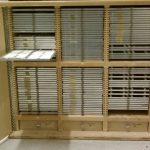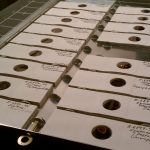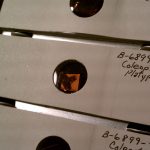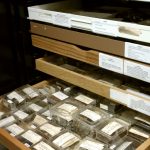Unbeknownst to some, UCMP is home to a large collection of amber-encased insect specimens. While some of the most famous amber fossils come from the region south of the Baltic Sea, the majority of UCMP’s amber collection hails from the Chiapas region of Mexico, illuminating never before captured environments of the Western Hemisphere.
Spanning nearly two decades from the mid-1950s through the 1970s, efforts to collect and study these specimens were spearheaded through collaboration between the UC Museum of Entomology’s Paul D. Hurd, Jr. and Ray F. Smith and UCMP’s J. Wyatt Durham. With the help of friends near and abroad through years of fieldwork and research, the Mexican amber project was able to paint a fresh picture of Chiapas insect diversity during the Miocene. The project drew together experts from around the world to identify and describe the insects encased in amber, resulting in scientific publications, radio broadcasts, magazine articles, and more.
Check back to this blog often for inside looks into the amber project brought to you by the Council on Library and Information Resources Hidden Collections Grant and the UCMP archives.



